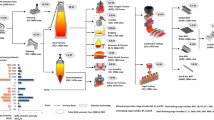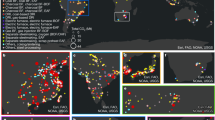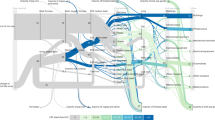Abstract.
Accounting for 6–7% of global greenhouse gas (GHG) emissions, the steel industry and its supply chain emit more CO2e (CO2 equivalent) than any other metal produced. Steel is a “hard-to-abate” industry due to its reliance on carbon to reduce iron ore to iron. Steel demand will grow due to population growth, implementation of renewable energy systems, and a need for resilient infrastructure. The steel industry must reduce GHG emissions while increasing output by more than 30% by 2050. This paper describes the expected technology changes and related challenges that face the steel industry on its journey to net zero GHG emissions.
Access this chapter
Tax calculation will be finalised at checkout
Purchases are for personal use only
Similar content being viewed by others
References
Sukhram M, Lefebvre K, Aubry N, Cameron I, Ellis B, Liu X, Honeyands T. Top gas recycling revisited to reduce blast furnace CO2 emissions. Nashville: AISTech; 2021.
Cameron I, Aubry N, Sukhram M. Blast furnace hydrogen usage – challenges and opportunities. AIST hydrogen webinar, June 10, 2021.
Primetals. https://www.primetals.com/press-media/news/hyfor-pilot-plant-under-operation-the-next-step-for-carbon-free-hydrogen-based-direct-reduction-is-done. Last accessed 2022/03/08.
Metso Outotec. https://www.mogroup.com/portfolio/circored-hydrogen-based-reduction/. Last accessed 2022/03/08.
Meijer K, Zeilstra C, Hage H, Broersen P, van Boggelen J. Various roads to CO2 reduction with HIsarna technology. Dusseldorf: METEC; 2019.
Rio Tinto. https://www.riotinto.com/news/stories/decarbonising-steel-making. Last accessed 2022/02/27.
Potter S, Filho H, Maia L. LeafIron – an innovative contribution to eliminate CO2 emissions from steel production. Dusseldorf: METEC; 2019.
Acknowledgments
The enthusiastic support from Hatch colleagues Nicholas (Nick) Aubry, Brittany (Britt) MacKinnon, Richard Elliott, and Maéva Chrzaszcz was appreciated as I prepared this keynote presentation.
Author information
Authors and Affiliations
Corresponding author
Editor information
Editors and Affiliations
Rights and permissions
Copyright information
© 2023 The Author(s), under exclusive license to Springer Nature Switzerland AG
About this paper
Cite this paper
Cameron, I. (2023). Deep Decarbonization and Pathways to Net Zero Emissions: A Steel Industry Perspective. In: Proceedings of the 61st Conference of Metallurgists, COM 2022. COM 2022. Springer, Cham. https://doi.org/10.1007/978-3-031-17425-4_24
Download citation
DOI: https://doi.org/10.1007/978-3-031-17425-4_24
Published:
Publisher Name: Springer, Cham
Print ISBN: 978-3-031-17424-7
Online ISBN: 978-3-031-17425-4
eBook Packages: Chemistry and Materials ScienceChemistry and Material Science (R0)




